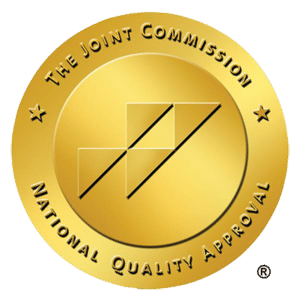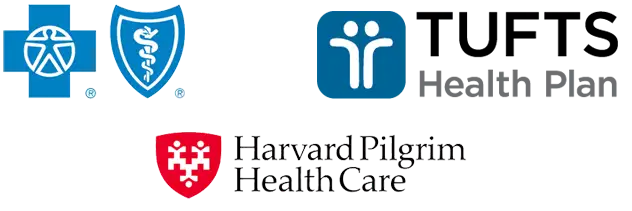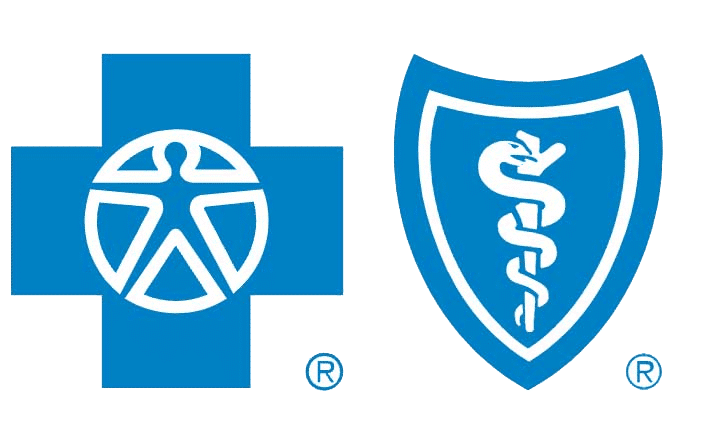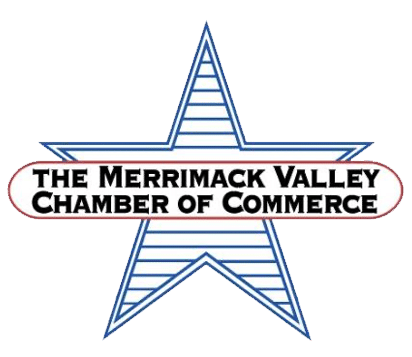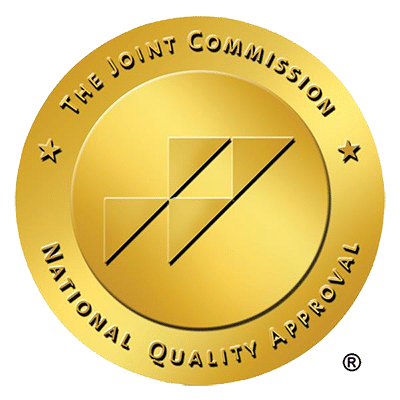Are you trying to understand the stages of crack addiction? This article outlines the progression from initial experimentation to the devastating impact of full-blown addiction. By demystifying these stages, we aim to provide clarity on how crack takes hold and the potential routes to treatment without jargon or dramatization.
Key Takeaways
- Crack addiction unfolds in stages from experimentation to full-blown addiction, marked by tolerance, dependence, and severe physical and psychological risks.
- Withdrawal symptoms from crack can begin within 30 minutes after the last dose, necessitating a structured detox environment – often available in inpatient or outpatient settings like partial hospitalization programs.
- Recovery from crack addiction involves a comprehensive treatment approach, support systems like Cocaine Anonymous, and aftercare strategies to prevent relapse and maintain long-term sobriety.
Exploring the Progressive Phases of Crack Addiction
Traversing the tumultuous terrain of crack addiction is akin to being swept away by a relentless current. The transition from initial experimentation to full-blown addiction isn’t a sudden fall, but a slow descent, where each phase marks a deeper entrenchment in the substance’s snare. The stages of crack addiction unfold like a tragic narrative, starting with a seemingly innocent prologue and escalating to a climax fraught with danger and desperation.
These stages—experimentation, tolerance, dependence, and addiction—are critical in understanding how what starts as a voluntary act can transform into a compulsive need. Unpredictable in nature, the potency of crack can trap some individuals after only a few uses, while for others, the progression may be more insidious, with the risk amplifying with each subsequent encounter.
The Experimentation Phase: Initial Encounter with Crack Cocaine
The first encounter with crack cocaine is often driven by curiosity or the persuasive influence of peers, where the individual steps into unknown territory without the intent of staying there. This first experimentation is a search for the fabled euphoria, a feeling of invincibility that crack is known to induce with alarming efficiency.
Yet, unbeknownst to the novice user, this first taste can ignite intense cravings for the drug, setting the stage for a perilous journey fraught with the potential for addiction.
Escalation and Tolerance: Increasing Crack Use
As the story of addiction develops, the user often finds themselves pursuing the fading impact of crack’s initial high. The brain, a malleable organ, adapts to the presence of the drug, dulling its effects and compelling the user to increase the dosage—a clear harbinger of escalating addiction.
This insidious stage is marked by:
- the relentless pursuit of the elusive euphoria
- a journey marred by the body’s growing tolerance and the brain’s altered state
- demanding more of the substance to breach the ever-raising threshold of satisfaction.
Dependence: The Inescapable Need for Crack Cocaine
As the cycle of use continues, becoming dependent on crack cocaine turns into an unavoidable reality. The body, now ensnared in the drug’s grip, requires its presence for normal brain function, a state of existence where equilibrium is predicated on the drug’s influence. Dependence signifies a profound shift in the brain’s chemistry, where neurotransmitter release is altered to such an extent that withdrawal symptoms manifest in its absence, a grim reminder of the body’s physical reliance on the substance.
This phase is the tipping point, where casual use transitions into drug abuse, and the absence of the drug ushers in a suite of withdrawal symptoms, signaling a deep-seated dependence.
Full-Blown Addiction: Compulsion Despite Consequences
In the final act of this addiction odyssey, the individual, addicted to crack, is consumed by a compulsive need to use crack cocaine, a need that eclipses all rational thought and consideration of the repercussions. The full-blown addiction phase is a whirlwind of psychological chaos, where psychiatric symptoms such as agitation, paranoia, and even violent behavior cast a shadow over the user’s existence, often leading them down a path fraught with life-threatening consequences and crack abuse.
The Physical and Psychological Grip of Crack Cocaine
Crack cocaine’s grip is one of immediacy and intensity. Upon entering the bloodstream, its effects are swift, reaching the brain within seconds and triggering a surge in dopamine release. This biochemical cascade results in a powerful but ephemeral euphoria, accompanied by a surge of energy and a sense of invincibility. However, the allure of these immediate effects belies the high potential for a substance use disorder, characterized by a relentless cycle of short-term impacts and an eventual descent into long-term health risks, which can also be seen in the use of powder cocaine.
Users of crack cocaine often find themselves on a steep edge, where the pursuit of short-lived highs comes at the price of increased susceptibility to heart attacks, strokes, and irreversible cardiovascular damage. It’s a perilous tightrope walk, where each step could lead to catastrophic health consequences, such as a cocaine overdose. Unlike other addictions, there is no medication-assisted treatment to directly combat the addiction to crack cocaine, making cocaine use even more dangerous.
Physical Symptoms of Crack Addiction
The physical impact of crack addiction includes:
- Loss of appetite and weight loss
- Constant runny nose and recurrent respiratory infections
- Changes in sleep patterns, often sleeping less
- Muscle tremors and severe headaches
- Withdrawal signs
These physical symptoms paint a stark portrait of decline and underscore the body’s ensnarement by the drug.
As the addiction deepens, the risks escalate, with potential life-threatening medical issues like heart failure or stroke waiting in the wings. Chronic crack use also dulls cognitive functions, impairing memory and learning due to disrupted glutamate neurotransmitters, while simultaneously heightening the brain’s stress receptors, leaving the individual increasingly sensitive to stress.
Psychological Symptoms and Mental Health Issues
The psychological consequences of crack addiction are deep and extremely disturbing. Some of the common consequences include:
- Severe depression
- Paranoia
- Significant emotional upheaval
- Unexplained anger and mood swings
- Intense paranoia, leading to cocaine-related violent behaviors
- Psychosis with hallucinations and delusions
These consequences paint a harrowing picture of the mental state of those struggling with substance abuse.
These mental health issues are not only distressing but also form a barrier to a life of normalcy and peace.
Want to Learn More about Crack Addiction?
Our addiction recovery team is here 24/7 to answer your questions or to get you help.
Breaking Free: Initiating the Crack Detox Process
Starting the journey to liberate oneself from the clutches of crack addiction is a daunting task. Detoxification is the first step on this arduous path, a process steeped in a triad of significant phases: acute withdrawal, protracted withdrawal, and post-acute withdrawal symptoms. The journey through detox is deeply personal, affected by the user’s unique body chemistry, tolerance, and the severity and duration of their addiction.
Professional supervision is a cornerstone of this process, providing management of the uncomfortable withdrawal symptoms and ongoing support to fortify the individual against the siren call of relapse. While the majority of withdrawal symptoms typically abate within a fortnight to a month, the detox journey can be navigated in various settings, from inpatient to outpatient centers, each tailored to the individual’s needs.
Understanding Crack Withdrawal Symptoms
The onset of withdrawal symptoms can be as swift as 30 minutes after the last dose of crack cocaine, ushering in an intense maelstrom of drug cravings and mood swings. Anxiety, agitation, and depression are among the initial harbingers of crack cocaine withdrawal symptoms, signaling the brain’s struggle to adapt to the absence of the drug. Recognizing cocaine addiction symptoms, such as these, is crucial for seeking timely intervention and support.
Mental disorientation and severe headaches compound the ordeal, with muscle tremors adding to the constellation of physical discomfort.
Navigating the Withdrawal Process
Navigating the rough waters of the withdrawal process requires a well-structured environment to promote stability and enable a successful recovery. Partial hospitalization programs offer such an environment, allowing patients to immerse themselves in treatment during the day while returning home in the evenings, thus maintaining a semblance of normalcy and stability.
This approach not only supports the individual through the initial crash phase of withdrawal but also lays a foundation for the gradual rebuilding of a life free from addiction.
Rehabilitating from Crack Cocaine Abuse at Topsail
At Topsail, the battle against drug abuse is tackled with a holistic and evidence-based crack addiction treatment approach. The facility, nestled in North Andover, Massachusetts, is dedicated to crafting a conducive environment for effective rehabilitation, offering a range of treatment programs that incorporate a variety of therapeutic methodologies.
From cognitive-behavioral therapy (CBT) and dialectical behavior therapy (DBT) to motivational interviewing and contingency management, Topsail’s arsenal is well-equipped to support recovering addicts in their pursuit of freedom from addiction.
Topsail’s Full Day Program: A Deep Dive into Recovery
For an immersive recovery experience, Topsail’s Full Day Program stands as a symbol of intensive treatment. This program, spanning full weekdays, provides an immersive experience akin to a traditional work or school week, fostering a sense of routine and structure so vital for recovery.
Within this daily regimen, patients are enveloped in a comprehensive suite of support and therapeutic interventions, each tailored to navigate the complexities of addiction and pave the way towards sustained sobriety.
The Flexibility of Topsail’s Half Day Program
Flexibility is a key feature of Topsail’s Half Day Program, making it an ideal choice for individuals eager to meld their recovery process with the demands of daily life. Known formally as the Intensive Outpatient Program (IOP), it is designed to bolster individuals as they navigate the challenges of reintegrating into society while steadfastly managing their recovery.
Customized Care in Topsail’s Outpatient Program
Personalization is the distinguishing feature of Topsail’s Outpatient Program, offering personalized treatment plans that consider each patient’s unique circumstances, schedules, and needs. By aligning treatment with individual lifestyles, Topsail’s OP ensures that recovery is not only attainable but also sustainable in the long term.
Support Systems and Ongoing Sobriety
The journey to recovery does not conclude with detox or treatment; it’s a lifelong path that requires strong support systems and aftercare strategies. Support groups like Cocaine Anonymous play an instrumental role in maintaining sobriety, offering a sanctuary for recovering addicts to share their stories and gain strength from their peers. The inclusiveness and accountability fostered within these groups are associated with higher abstinence rates and reduced relapse rates, testifying to their importance in the recovery landscape.
Moreover, sober living houses provide transitional residences that employ peer-oriented social model modalities, further diminishing substance use and buttressing ongoing recovery efforts.
The Role of Support Groups like Cocaine Anonymous
Cocaine Anonymous extends beyond being just a support group; it’s a community that champions the cause of recovery from cocaine, including crack cocaine addiction. The program’s spiritual approach is tailored to the individual’s beliefs, ensuring inclusivity and fostering a nurturing environment.
Sponsorship within Cocaine Anonymous is a testament to the program’s commitment to personal guidance, as seasoned members guide newcomers through the steps necessary to maintain sobriety. The impact of peer support groups like Cocaine Anonymous is profound, enhancing engagement with treatment and adherence to outpatient appointments, thus becoming an integral part of aftercare services for sustained recovery.
Aftercare Strategies to Sustain Recovery
Aftercare services are the silent saviors in the recovery process. They serve as the sentinel against relapse, offering continued support as individuals navigate life post-treatment. One such aftercare strategy is phone-based counseling, a convenient and effective means for recovering addicts to sustain their recovery journey upon completing more intensive treatment programs.
The odyssey from crack cocaine abuse to recovery is fraught with challenges, but it is a journey illuminated by the prospect of redemption and renewal. Throughout this exploration, we’ve traversed the stages of addiction, delved into the physical and psychological effects of crack use, and charted the course of detox and rehabilitation. Treatment centers like Topsail provide the sanctuary and support necessary to reclaim lives from the clutches of addiction. As we conclude, let us carry the torch of hope and the conviction that recovery, although arduous, is a path lined with the promise of a brighter tomorrow.
Frequently Asked Questions
What are the signs of moving from crack cocaine experimentation to addiction?
When experiencing increased tolerance, intense cravings, physical and psychological dependence, and compulsive drug use despite negative consequences, it’s a sign of moving from crack cocaine experimentation to addiction, and professional treatment is essential at this stage.
Can withdrawal from crack cocaine be dangerous?
Yes, withdrawal from crack cocaine can be dangerous due to severe physical and psychological symptoms, such as anxiety, depression, and intense cravings, which can be extremely uncomfortable and challenging to manage without professional supervision.
Does Topsail offer different types of treatment programs for crack cocaine addiction?
Yes, Topsail offers various treatment programs for crack cocaine addiction, including a Full Day Program, Half Day Program, and Outpatient Program, to cater to different individual needs.
How do support groups like Cocaine Anonymous aid in recovery?
Support groups like Cocaine Anonymous aid in recovery by providing a supportive community for individuals to share experiences and gain mutual support, as well as emphasizing a spiritual approach and including sponsorship to help members maintain sobriety. Their 12-step program plays a crucial role in recovery.
What is the importance of aftercare services in maintaining long-term sobriety?
Aftercare services are crucial for maintaining long-term sobriety as they provide ongoing support, prevent relapse, and sustain recovery by offering continued guidance and reinforcement of coping skills, such as phone-based counseling.
Related Posts

Your Comprehensive Guide on How to Stop Fentanyl Addiction
Wondering how to stop fentanyl addiction? You’re not alone. Fentanyl is a highly addictive opioid, and breaking free requires clear, actionable steps and resilient support.

The Signs of Crack Addiction: Key Symptoms to Watch For
Spotting the signs of crack addiction early can be lifesaving. Rapid weight loss, behavioral shifts, and psychological disturbances are warning signals. This guide directly addresses

Managing Crack Addiction Withdrawal: Symptoms & Timelines
What does crack addiction withdrawal really look like and how can you manage it? When confronting withdrawal, it’s crucial to grasp the intensity of symptoms,

How to Treat Marijuana Addiction Effectively: Beat The Habit
Seeking how to treat marijuana addiction? This straightforward guide outlines step-by-step methods to break free from marijuana’s grip. Simplifying the science, we address the core

A Step-by-Step Guide on How to Overcome Crack Addiction
Navigating the turbulent waters of crack addiction recovery may seem daunting, but you’re not alone. In learning how to overcome crack addiction, knowing what to

Critical Signs of Meth Addiction: Symptoms & Support Options
Wondering what are the warning signs of meth addiction? Early detection can be lifesaving. From drastic behavioral swings to ‘meth mouth,’ these symptoms are alarming
